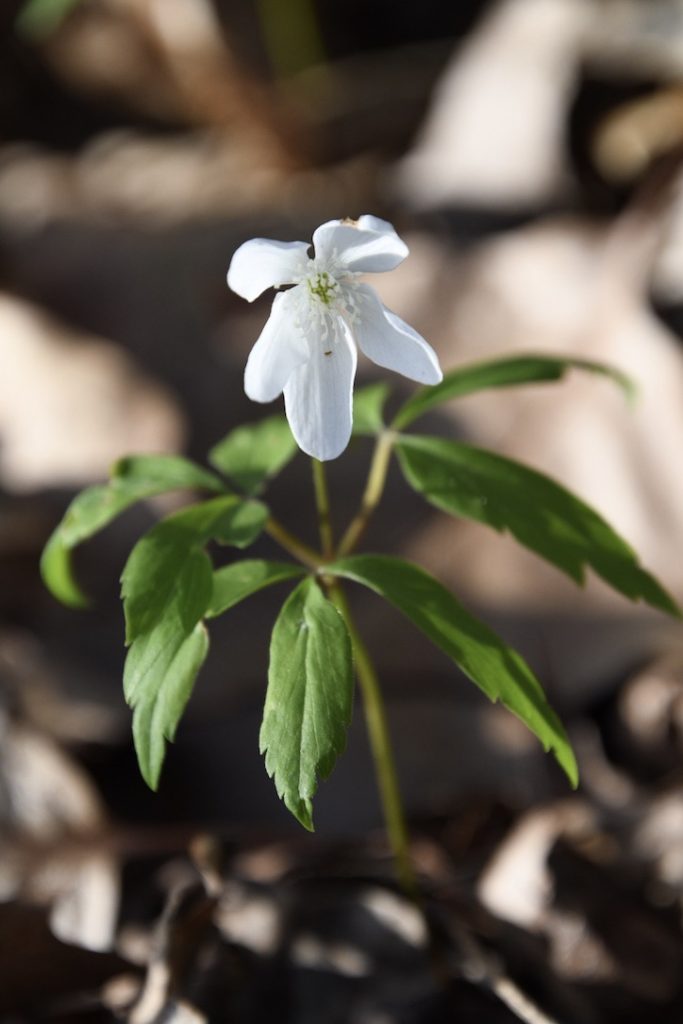Ephemerals

On May Day, Tim and I searched for ephemerals along the banks of the Rock River. An ephemeral is a plant that grows and dies within a few days.
I’d seen the mottled leaves of trout lilies spearing through the leaf litter days earlier. On this warm Sunday we found trout lilies blooming on both sides of a woodland path. They have splendid, yellow flowers, and I never see trout lilies without remembering the first time I learned their name.
It was on a hike on Mount Cube, in New Hampshire. At the trailhead, one of the friends in our group said, “We might see the trout lilies in bloom.”
“What are trout lilies?” I asked.
“A spring wildflower.”
Sure enough, we came across a breathtaking colony of them, where this friend pointed out the leaf, mottled like the side of a brook trout. The characteristics of this yellow flower made an indentation in my brain.
I didn’t have my phone with me on our May Day walk, so I couldn’t snap a photo of the small white flower hanging above a bouquet of three lobed leaves with saw-tooth edges. It’s a flower I’ve looked up in my field guide more than once, but the name escaped me—again. Without my camera, I had to observe and remember the flower’s details until I could look it up: wood anemone.
Memory
A week of cool, overcast and rainy days followed our trout lily walk, so I didn’t return to the riverbank until the following Sunday. The trout lilies were all gone, but lots of wood anemone were in bloom.
During the week of rain, the first deciduous trees also started to leaf out, covering the forest with a pale green veil. Soon, the forest canopy will block sunlight to the understory, and the brief season of woodland spring ephemerals will again be a memory.
A similar pale veil threatens to obscure human memories as we age —possibly the scariest aspect of aging. But as these ephemeral flowers are teaching me, there is a strategy for making, maintaining, and possibly even improving memory: by telling ourselves stories about what we want to remember. By telling this story, I will now remember wood anemone, a delicate white bloom, sometimes with a hint of pink, which opens just after the trout lilies fade.


This makes me think about the mountain wood lilies that bloom in out of the way places and are rarely seen. I’ve seen them and now remember them.
Loved your description of spring ephemerals; your writing affects me much like the book I’m reading with a local book club, “The Home Place: Memoirs of a Colored Man’s Love Affair with Nature,” by J. Drew Lanham. He’s from South Carolina, a professor of wildlife ecology. “Priceless places where nature hangs on by tooth, talon, and tendril…birds exploded from blackberry brambles, flying scattershot in every direction with wings a-whirring…”
Your writing, like Lanham’s, takes me back to the Massachusetts coast and the elderly cousin whose love was birds, flowers, and natural landscapes. I transplanted to the Pacific Northwest 60 years ago, but this quote from Lanham fits: “My heart has moved on to love other people, places, and things I never thought I could. But that first place I knew as home will always be locked within…” like seagulls, high bush blueberries, cat brier,”cow pies,” and spring ephemerals.